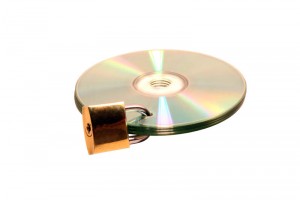
A friend of mine used to shoot dead chickens out of an air cannon at fighter jet canopies to test them against bird strikes. She told me a story that a team in the UK was trying to replicate the process, but kept shooting the birds right through the canopy. When they reached out to the US team, our folks replied with a simple message: Gentlemen, thaw your chickens. That’s become a sort of shorthand for doing something that should be obvious, but isn’t.
From whole disk encryption to public key cryptography, encryption has a long history of being the magic bullet that will solve all our information security problems. If only in were so! Yet encryption is a key defense against the Bad Guys™ for as individuals and as organizations. In part I of this two-part post, I’ll share some thoughts about using it to protect your own information. In part II, I’ll talk about how it can help businesses protect their employees, customers and shareholders.
I know there’s a lot of concern about secret back doors (or front doors as they’re now being rightspeaked) in major encryption solutions. While I do have a large stock of tinfoil hats (they hide me from the black helicopters), let’s be a bit pragmatic here for a minute. If a nation state wants to get my data, they’re going to. They’ll break into my home, install a keylogger in my machine, and capture my password. Or book a seat next to me on an airplane or grab the table next to me at my local coffee shot so they can record me unlocking my computer, or even use Rubber Hose cryptography to get me to reveal my passphrase.
Likewise, when I’m online, my computer is unlocked and the information accessible, so any malware on my computer will be able to phone it home (that’s why patching is so important). So why do we worry about encryption? The big one is theft. I’ve had a laptop stolen in the past (right out of my docking station over a weekend) in an office behind a door with a badge reader and a security guard – and I’m not alone. By some estimates 10% of all laptops are stolen in the first year of ownership. So the threat we’re talking about here is that if someone grabs my laptop out of the tray at the airport, hacks the hotel room door, or simply steals my car with my backpack in the trunk, my entire digital life is now exposed and at risk.
And that’s what encryption helps protect. It’s the difference between “oh crap, I lost a piece of hardware and have/get to buy a new model” and “oh bleep, I have to drop everything and try to figure out what the damage is”. It’s important to use a good passphrase or password, and you’d better remember what it is. If you forget it, you’ll lose your data for sure. By the way, that’s why I like passphrases for this kind of thing more than passwords – it’s easier to remember a complex phrase, than it is a complex password. I recommend putting all your drive encryption passwords into a secure password vault like 1Password, because it may be years later when you have to decrypt the data, and you may not remember the one you used.
If you use a Mac, it’s easy to turn on FileVault 2, just follow these instructions. Make sure you also encrypt your Time Machine backup too. For Windows, turn on Bitlocker. Just be careful – if your windows 10 device came with bitlocker turned on, you need to turn it off, then back on in order to encrypt the entire disk. For cloud services, well, that’s a whole different post!
It’s easy, simple, and free. Like thawing your chickens.

Thank you for giving the info. It will help me bunch.